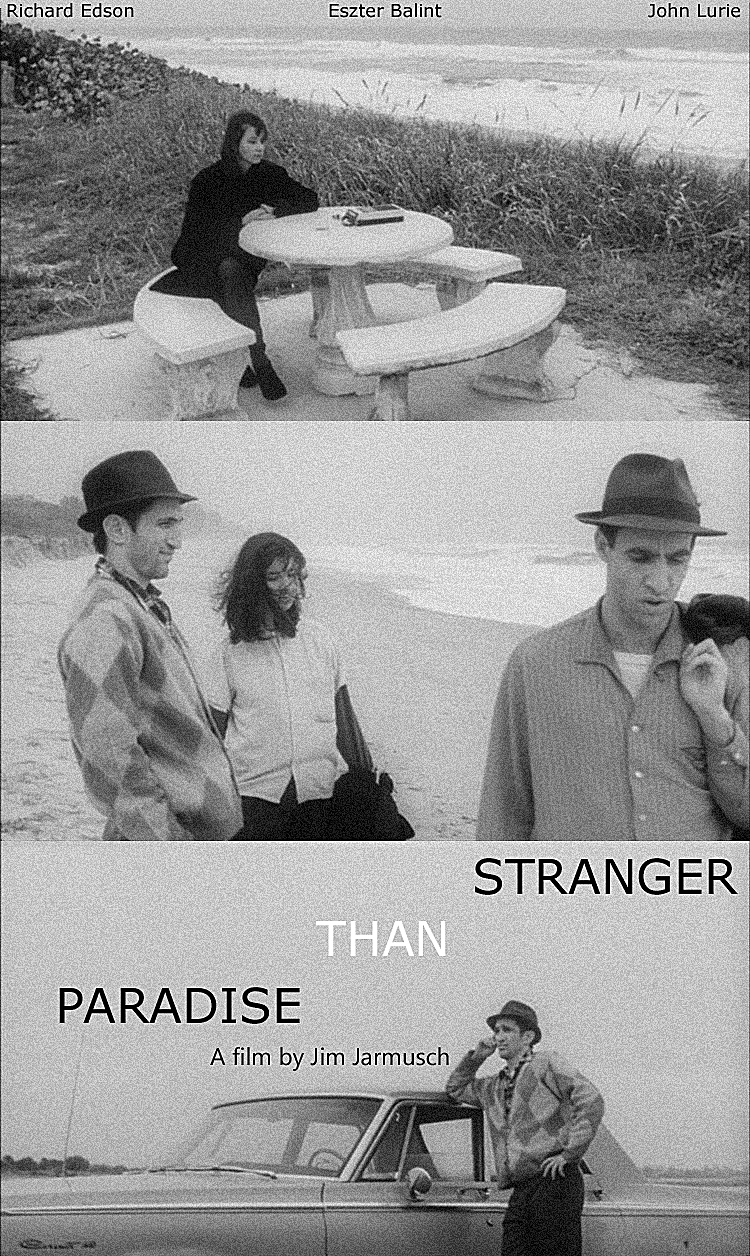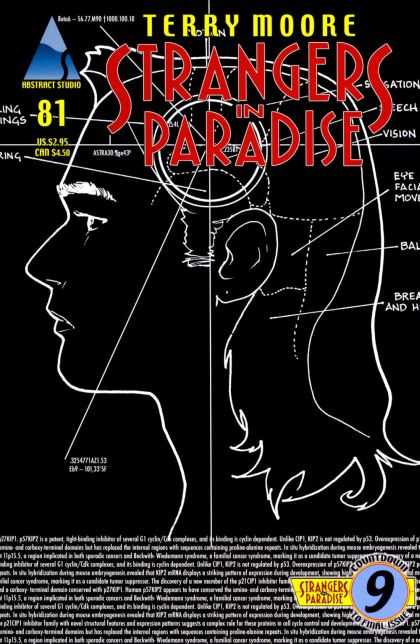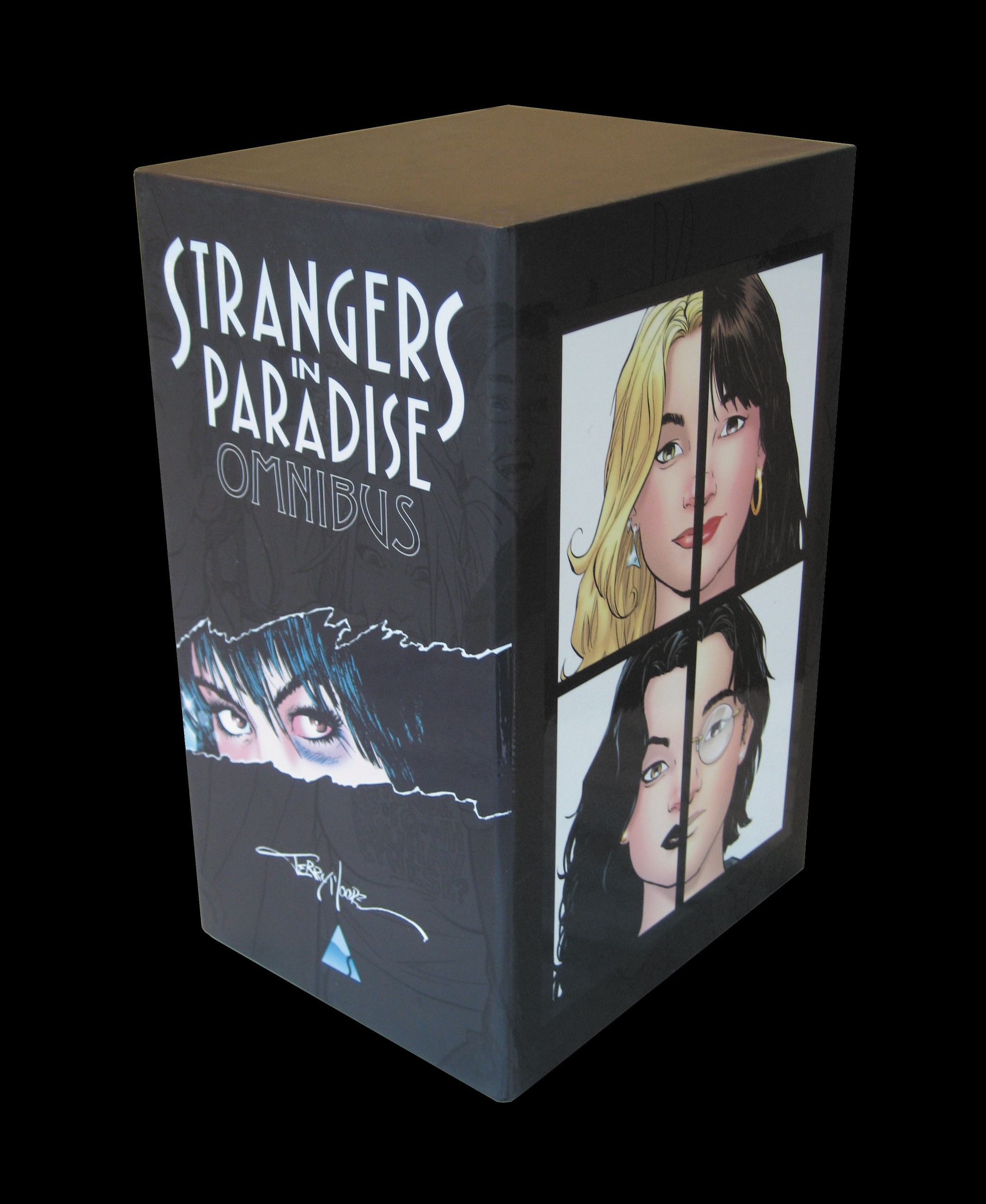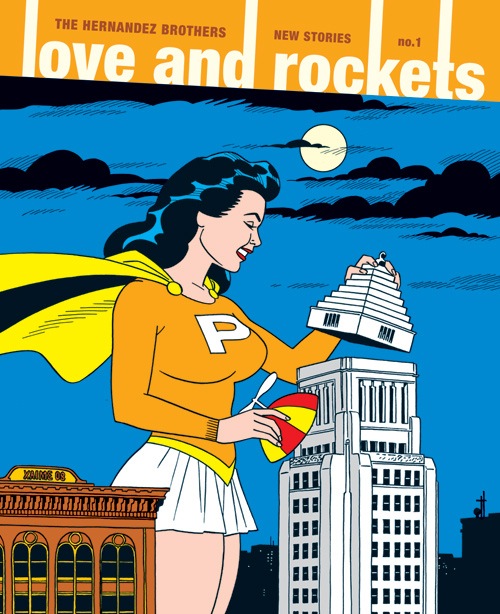 |
| David Lloyd - Kickback |
 |
| Andrew Robinson and Kyle Baker - THE FIFTH BEATLE |
Before we knew it, the one-shot that we had envisioned had become
an ongoing series. Chuck got busy with other things (day job and his own
writing career), so after a few issues I took over the full editorial
job and put all my energy and effort into making NEGATIVE GURN the best
damn anthology out there. I became obsessed to see who else I could get
into the series, so I began reaching out all the comic creators I
enjoyed and, to my surprise, got more an amazing response. I didn't get
everyone I targeted, but I got most of them. The weirdest one I targeted
but didn't get was John Mellencamp. I found that Mellencamp was a
painter so I thought why not try to use one of his painting as a cover?
Some distant relative of my wife had played in his bank during his early
years, so her grandmother in Indiana hunted down Mellencamp's address
for me. I sent him a comp package of issues with a letter (this was
pre-email days) trying to convince him to let me use one of his
paintings, but, alas, I never heard back from him. Oh well. It was worth
a shot.
 |
| John Mellencamp - Painting |
So,yes, to answer your question, it
was an honor to work with and publish so many of the established stars
and future stars in the industry. It was a dream come true for this
life-long comics fan.
2.
Negative Burn on my opinion was the best antology ever. Did you think
at the time that this could be a big oportunity to expand reader's
personal views of those great comic artists?
 |
Negative burn - Moebius cover
|
First off, thanks for the compliment. Secondly, I don't know if I
thought about trying to expand reader's personal views of the creators. I
just wanted to let the creator express their own personal views and to
just give them an avenue to truly do whatever they wanted, without
restrictions. I wasn't able to offer page rates as such, but I was able
to offer pure freedom of expression. I think that's what most of the
creators and most of the readers all related to and what gave NEGATIVE
BURN such a voice.
3. In 2004 you created Desperado and partnered with Image Comics. Was it difficult to start your own publishing company?
 |
| Desperado publishing logo |
Yes. Very difficult. I didn't have financial investment at the time and I
was independently wealthy, so took out a second mortgage on my house
and got took out another loan and a modest credit-line at the bank to
get up and running. Like NEGATIVE BURN, I had envisioned starting small,
but as Desperado was announced and my partnership with Image was
cemented I was offered all these really great projects and such that
Desperado jumped out publishing a lot more volume that I originally
anticipated. I moved in with Gaijin Studios (which at the time was Cully
Hamner, Karl Story, Adam Hughes, Brian Stelfreeze, Stine Walsh, and
Kelsey Shannon) and hired my right-hand "man," April Doster. In looking
back, I expanded too quickly and the money flowed out too rapidly
without getting the return I needed. The back-breaker though was that
when I left Image to go off on my own in 2006 the economy almost
immediately tanked and our sales dropped in half overnight and never
recovered. I eventually partnered with IDW in 2009, but by that time we
were only able to really focus on the art book line and our days as a
comic book publisher were pretty much in the past.
4.
You also created amazing artbooks by people such as Brian Bolland,(that
won an Eisner), P.Craig Russell (Eisner nominee), Jeffrey Jones, Tim
Bradstreet, Joe Jusko, among others.
Do you feel proud on these Editions?
 |
| The art of P.Craig Russel |
|
|
|
|
|
 |
| The Art of Brian Bolland |
 |
| The Art of Joe Jusko | | |
 |
The Art of Timothy Bradstreet
|
 |
The Art of Jeffrey Jones
|
I feel VERY proud of these editions. The art book line was something I
wanted to do from day one, but it took a little bit of time to get them
up and running. I didn't originally plan on "doing" them myself. After
all, I was running the entire company and putting out 5-7 titles per
month and didn't have the time or know-how to do the work. But after
going through a few graphic designers who either wouldn't or couldn't
get the work done, I threw up my hands and jumped in headfirst and
taught myself how to design and create the books myself. To be honest,
they are a LOT of work. But it turned out to be a creative outlet that I
hadn't had since I was a full time writer a few years back in my X-MEN
days. Plus, I love learning new things, so learning how to design these
books was not only challenging, but rewarding. When the work is done I
can hold up one of these five pound volumes and not only see the result
of my creative endeavors, but FEEL the weight of it. :-) Plus, working
with all these truly legendary artists and putting their life's work
into a massive tome that, hopefully, they can be proud of is a reward in
itself.
 |
X-men - Joe Pruett
|
5.
I remember reading your short stories of the saga KILROY IS HERE and
loving them a lot. Were you inspired on some TV series or movies to do
this saga?
 |
Kilroy is here - GN
|
Not really. KILROY IS HERE is something that just came to me one
day while I was working as Bob Burden's assistant and learning all about
this industry. I had in my mind that I was going to be an artist at
some point, but after working in the industry and meeting all these
truly great artists I began to realized that I didn't have the talent
(or speed) to be an artist, so i turned my attention to becoming a
writer. The first thing I needed to do, of course, is come up with
something catchy. Unlike most want-to-be comic creators, I didn't want
to work at Marvel or DC. Sure, I grew up a Marvel Zombie, but by the
high school years I had been introduced to all the great work going on
in the independent market of the 80s. PC Comics, Eclipse Comics,
CEREBUS, First Comics, Dark Horse, Caliber, etc. I wanted to create my
own stories with my own characters.
I don't
remember why KILROY IS HERE came to me, but I remember that I was
thinking about the old World War II tag "Kilroy was here" and thought,
hey, what if there was a character actually called Kilroy? And instead
of signing he "was here" that he's cross out the "was" and add "is"
here. I thought, hey, that's pretty catchy and then started coming up
with his character and his story. Being heavily into what Vertigo was
doing at the time, I went with a supernatural "feel" and tried to
channel Alan Moore, Neil Gaiman, etc. and then tried to mix in my love
for history and obscure current events around the world that escape most
everyday attention. I probably wasn't too successful, but I'm proud of
the series and would really love to return to the KILROY world at some
point. In fact, I already have started to flesh out some notes and ideas
that may lead to Kilroy's return in the near future. More on that as it
becomes more of a reality.
 |
Kilroy was here - Graffiti
|
|
|
6.
I really loved a book that was released by Desperado that caught me
completely off-guard at the time and that was BLUE by Elizabeth Genko
and Sami Makkonen. It was mind blowing in my opinion. Do you think that
it could make a good movie if it was adapted into cinema?
 |
Blue by Elizabeth Genko
and Sami Makkonen
|
Sure, I think if had the right screenwriter and director attached to it,
it could make a fine film. BLUE is a book that I remember feeling the
same way as you do when I first saw it. I honestly can't remember
exactly how it came to me. I think Elizabeth and Sami had done something
in the second series of NEGATIVE BURN I had started up at Desperado and
Elizabeth had perhaps sent over BLUE to see if I was interested. Both
the story and the art were captivating to me so I offered to publish it
as a stand-alone graphic novel, something I would never usually do with
two unknown creators, as it is such a financial risk. Later, when Frank
Beddor was looking for a replacement for Ben Templesmith on his HATTER M
graphic novels, I suggested Sami to him and they ended up working on, I
think, four graphic novels together. Also, when we were doing a
relaunch for DEADWORLD, I thought Sami would be perfect for the job and
Gary Reed agreed. So, BLUE, while not being a money maker, was one of my
favorite projects and really set Sami up for quite a while. :-) Good
for him.
 |
| Frank
Beddor - HATTER M - Ben Templesmith |
 |
| Deadworld - Gary Reed and Sami Makkonen |
7.
Your path and Gary Reed one was really similar. You started together at
Caliber (the best comic publisher on my opinion). Then later at
Desperado you continued NEGATIVE BURN and even published DEADWORLD. What
I find unique and uncommon is that besides you being divided as
publishers you never had a rivalry or competition among publishers (Gary
promoted your books and you promoted Gary's ). How did you managed to
follow different paths without competition and being friends all this
time even on business?
 |
| Negative Burn 21 - Desperado |
Well, Gary and I have never actually been competitors. We worked
together at Caliber (with Gary being my boss while I was Creative
Director there) and then when I started Desperado Publishing up I went
to Gary for advice and properties. Gary, while never actually on staff
per say, has been a big part of Desperado since I started it, helping
out in numerous and important ways. DEADWORLD, which Gary owns the
copyright too, was one of the first comic series I went after, even
brining back the original DEADWORLD artist Vince Locke to work with Gary
on the series. Desperado reprinted a number of old Caliber series: ST.
GERMAINE, RED DIARIES, KILROY, UNTOUCHABLES, BLACK MIST, etc. If
anything, Desperado has always been an extension of Caliber. Gary and I
have always worked together. I help him out as needed. He helps me out
as needed. Actually, there's something else that we're currently working
on together that will be exciting if it ultimately happens. Crossing
our fingers. More on that later.
 |
| Gary Reed and Vince Locke - Saint Germaine |
 |
| Red Diaries by Gary Reed |
 |
| Deadworld - Gary Reed and Vince Locke |
8. Who are your favorite comic book authors that appeared at Caliber? And which one are your favorite ones ever?
I'm going to do this off the top of my head, so my apologizes to any creators that I might miss.
These
are some of my favorite creators that either started at Caliber or came
there near the beginnings of their career: Michael Lark, Mike Allred,
Phil Hester, Paul Jenkins, Warren Ellis, John Cassaday, Paul Pope, Scott
Morse, Laurene Campbell, Mike Perkins, Ken Meyer Jr. Vince Locke, Guy
Davis, Gary Reed, David Mack, Brian Bendis, Nabiel Kanan, Budd Root,
Andrew Robinson, Garth Ennis, Ed Brubaker, and a host of others.
 |
David Mack - Kabuki - Caliber comics
|
 |
| Airwaves by Michael Lark at Caliber |
 |
| Ed Brubaker - Monkey Wrench - Caliber |
My favorite classic creators: P. Craig Russell, Brian Bolland, Neil
Gaiman, Alan Moore, Bob Burden, Tony Harris, Butch Guice, Moebius, Jim
Starlin, Dave Stevens, Dave Sim.
 |
Alan Moore's Songbook - Caliber
|
 |
Alan Moore song drawn by Neil Gaiman
|
 |
Negative Burn - cover by Bob Burden
|
 |
| Dave Sim - Cerebus |
My favorite contemporary creators: Brian K. Vaughan, Jerome Opena, Rick
Remender, Jonathan Hickman, Scott Snyder, Amanda Conner, Esad Ribic
 |
| Amanda Conner |
 |
| Thor by Esad Ribic |
9.
How does an American publisher sees the European market? ( I remember
El Catalan, publishing there Hugo Pratt, Jordi Bernet, Carlos Sampayo
and José Muñoz, Caliber publishing Moebius and Fantagraphics publishing
other European Indie artists like: Trondheim, Joost Swarte, Jason,
Tardi among many others as well)..
 |
Hugo Pratt - Indian Summer - El Catalan
|
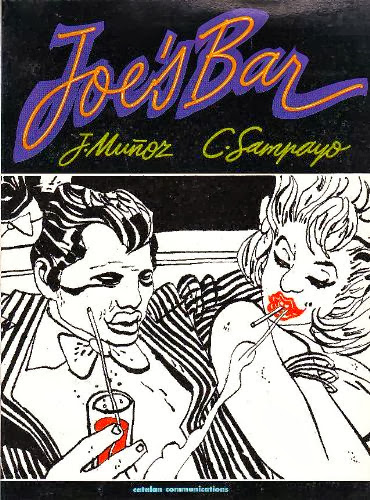 |
| José Muñoz - Joe's Bar - El Catalan |
 |
| Joost Swarte - Fantagraphics |
 |
Jacques Tardi - Fantagraphics
|
Speaking for myself, I admire the variety and production values of the
European marketplace. I think I have a lot of the same sensibilities as a
lot of European publishers, and, in fact, have always seemed to have a
large fan presence in my work at Caliber and Desperado from foreign
markets, probably as a result of the shared sensibilities. Plus, I've
always worked with creators from all over the world, (England, France,
Norway, Croatia, etc.) so that probably helps as well. If I had my way,
we'd do all our projects in the traditional European Album format, but
it's not financially feasible as that ties the money up for a long time
before you start to see a return on your investment. If I had a lot of
money in the bank though that would be the way I would publish.
10. Do
you see the European comic book market as a confusing one with the
several languages here or is it easy to understand this market nowadays
with everything online?
The language is not a a barrier for me as for as understanding the
marketplace. It is a barrier to me in terms of being able to read the
work though. :-) I wish that the American marketplace would except the
European work in translated editions much more easily than we do. We're
missing out on a large inventory of truly beautiful work.
11.
On 2009 Desperado partnered with a huge company in IDW. Do you think
that you lost a bit of your independence while joining them?
Well, we had partnered with a large company in Image Comics when we
first started publishing, so it wasn't that much of a difference. If
anything, IDW helped me in terms of realizing the difference between
publishing from your heart (taking chances on projects that I personally
love) and publishing from a business point-of-view (doing a better of
job of forecasting profit/loss margins). I learned a lot on the business
side of things while with IDW that I wish I had had when I was just
stating out. Probably would have made a difference in the health of
Desperado. But, yes, you do lose some independence when partnered with a
larger company. As long as it allows me to continue doing the things I
want to do though it evens out. My ego isn't so big that I can't take
feedback. In fact, it's less stressful when you have a sounding board to
bounce ideas off of. IDW (and Image, for that matter) were always great
in that regard. I enjoy working with others.
12. How do you see the future of the comic books with ebooks, ipad's and digital Comics?
I'm not going to stick my head in the ground and say that comics aren't
changing and I'm not going to say that it's changing for the bad.
Whatever can move this industry forward and keep it viable is good by
me. Of course, I'm a traditionalist and I like having a comic in my
hands to read and don't really read comics digitally, yet. I don't think
it has to be either one way or the other. There's room for both
platforms and I hope they both continue to succeed.
13. Are you also an avid World History reader?
I wouldn't say I was an "avid" world history reader, but, yes, I
love history and always like learning or discovering something new. I
easily get hooked on documentaries or TV specials or a news report on
the internet or whatnot. I find knowing what has coming before and what
is going on in today's work (information you don't usually get on your
network news programs, as it seems to be focused on hating on the
opposite political party of your choosing or on what the name of the
newest Hollywood baby happens to be).
14. What are your favourite comic book series ever?
Off the top of my head, I'd probably have to say WATCHMEN. THE ROCKETEER
and the first half of CEREBUS being two others. Of course, FLAMING
CARROT. I'll actually say that FLAMING CARROT is what not only got me
back into reading comics toward the end of the my college career after I
had fallen out of the comic collecting habit, but it also is what got
me my start in the comic industry as a career. Thank you, Bob Burden,
for answering my letter about breaking in tot he business and then
having the wisdom of offering me a job!
 |
| Bob Burden - Flaming Carrot |
 |
| Flaming Carrot comics by Bob Burden |
 |
| Watchmen - Alan Moore and Dave Gibbons |
 |
| Dave Stevens - Rocketeer |
 |
| Dave Sim - Cerebus | | | | | | | | | | | | | | | | | | | | | | | | | | | | | |
|
|













































